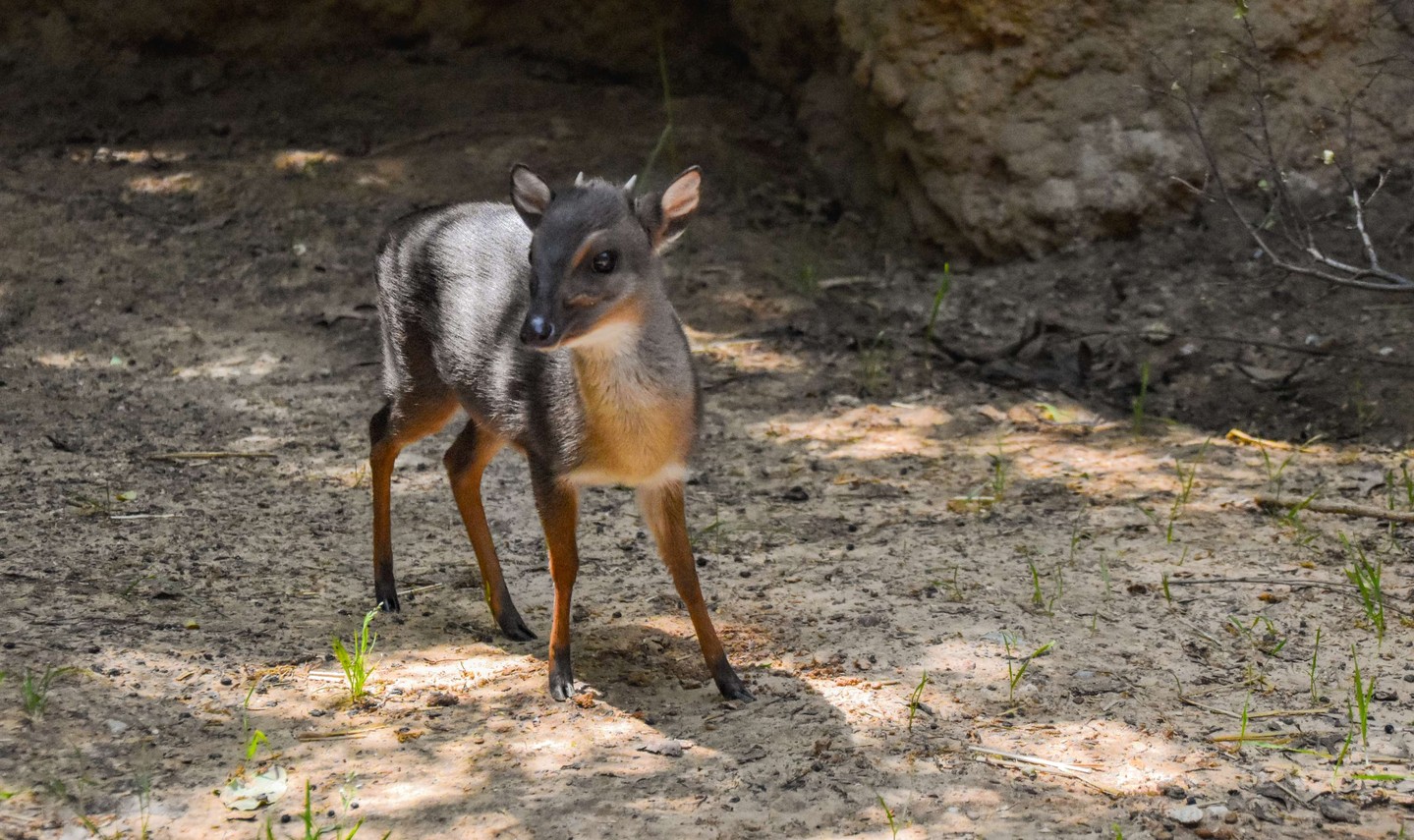- Introduction to blue duikers and their reappearance at the Dallas Zoo
- Physical characteristics and habitat of blue duikers
- Blue duikers’ ecological role and importance in conservation
- Details of Amethyst’s birth and development at the zoo
- The significance of zoo management and conservation efforts for blue duikers
Blue duikers have delighted zoo visitors since they were first introduced to the Dallas Zoo in the early 1990s. After several years away from the public eye, these fascinating creatures are back on display. Guests at the zoo now have the chance to meet Amethyst, an 8-month-old blue duiker born on July 20, 2024. Her presence symbolizes the ongoing efforts in zoo management and wildlife conservation aimed at protecting this tiny antelope species.
Characterized by their small size, blue duikers are one of Africa’s tiniest antelopes. They barely reach over a foot in height, making them notably diminutive compared to other species. Their bluish sheen, a hallmark of their short, sleek fur, helps them camouflage in the forest underbrush where they thrive. This adaptation is critical for survival in their natural African forest habitats, where they navigate dense foliage.
Blue duikers play a vital role in their ecosystems. As herbivores, they contribute to the control of plant growth, promoting a healthy balance in their environment. Their dung also facilitates seed dispersal, aiding forest regeneration. In a broader ecological context, they serve as prey for larger predators, underscoring their importance in the food web.
Amethyst’s birth at the Dallas Zoo is not just an event; it represents a successful example of careful zoo management and breeding programs. Born and raised on-site, she offers valuable insights into the breeding and development of blue duikers in controlled environments. Such programs are essential in maintaining genetic diversity and ensuring the species’ longevity, particularly for vulnerable populations.
The reintroduction of blue duikers to public view highlights the significance of zoos in wildlife conservation. These institutions provide a sanctuary for species at risk, offering protection and research opportunities that might be unavailable in the wild. Through breeding programs, habitat recreation, and public education, zoos like the Dallas Zoo play an indispensable role in conservation.
The return of blue duikers to Gorilla Trail, once home to cape porcupines, also underscores the dynamic nature of zoo habitats. These spaces are constantly evolving to meet the needs of different species, providing enriching environments that mimic natural conditions. This strategic management is key to ensuring the well-being of animals and maintaining visitor engagement.
In light of these efforts, zoos serve not only as places for entertainment but as vital centers for education and conservation. They foster an understanding of biodiversity and the necessity of preserving species like the blue duiker. By witnessing animals in environments designed to support their health and behavior, the public gains appreciation for the complexities of conservation work.
In conclusion, the blue duiker’s story at the Dallas Zoo exemplifies the intersection of education, conservation, and public engagement. It is a testament to the meticulous care taken in preserving delicate species and fostering an appreciation for our shared natural world. These efforts provide hope for the future of blue duikers and underscore the critical role zoos play in global wildlife conservation.
*****
Source Description
They’re tiny, they’re blue(ish), and they’re back! 💙
Guests can now view a blue duiker on habitat once again! Blue duikers have been part of the Dallas Zoo since the early ’90s, and while they’ve spent recent years behind the scenes, we’re thrilled to bring them back into view.
Meet 8-month-old Amethyst born right here at the Zoo on July 20, 2024. Blue duikers are one of the smallest antelope species in Africa – adults are barely over a foot tall! Their name comes from the bluish sheen of their short, sleek fur, which helps them blend into the dense forest underbrush.
Be sure to stop by Gorilla Trail and catch a glimpse of little Amethyst in her new habitat – the space previously home to our cape porcupines!
📸: Christina E.


